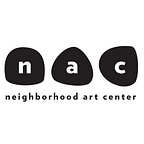Art History for Kids: An Intro
Art history is often considered a topic for “cultured adults,” but there’s no reason why kids can’t learn about the rich history of art. During the Fall of 2021 we introduced our first ever art history course. The first six week course covered pre-history to early medieval art, the second the Renaissance to the Romantic period, and our final course (TBA ) will cover Realism to Contemporary art.
Before we dive into our weekly lesson plans let’s talk about what art history is?
Art historians define art history as the study visual and tangible objects humans make and the structures they build.
So when we talk about art history we art talking about paintings and sculptures, yes but also architecture, pottery, home objects, clothing items and anything else that humans have made!
First things first, how do we talk about art? Let’s talk about the elements and principles of design to establish a basic art vocabulary.
These are the elements of art, they are the basic building blocks of art:
- Line
- Color
- Shape
- Value
- Form
- Texture
When we utilize these building blocks in certain ways we come to the principles of art.
Now that we’ve got the basics let’s talk about art history. When we look at art from the past we ask ourselves questions like…
- How old is it?
- What is its style?
- What is its subject?
- Who made it?
- What is it made out of?
This process of inquiry helps us understand the content of art (what’s shown in the art) and the context (the culture in which it was made).
For example if we look at Frida Khalo’s, The Two Fridas (Las dos Fridas) we can say, “It’s an oil painting and there’s two women sitting on the bench. They
look like the same women but in different clothes and their hearts are exposed and connect each other. A storm is brewing behind the women” This is the content. When we add in the context however we can offer insights and analysis. For example, “this is a self portrait of a Mexican artist. Through this painting she depicts an identity struggle between her indigenous Mexican side and the colonized Spaniard side. They are part of the same person but it is a messy connection and causes her inner turmoil.”
When we break it down we can all learn about art history and even offer insights. Over the next few weeks we’ll share what we learned in art class at the Neighborhood Art Center and how we incorporated what we learned into our own art practice!
